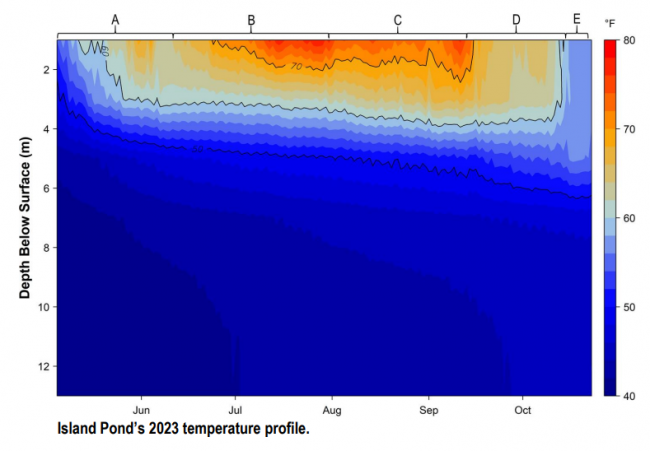
A. The water column of Island Pond was weakly stratified when sensors were deployed in early May. Shallower waters gradually warmed throughout May before a slight, short cool down in early June. Deep waters stayed consistently cold.
B. Surface water temperature increased steadily from mid-June through early August before cooling slightly in mid to late August. Deep waters began warm slightly in July but stayed cold enough to maintain stratification.
C. Surface waters responded to a late season heat wave by warming again. Peak surface water temperature often occurs in July or August however, Island Pond’s peak surface water temperature occurred on Sept. 9 (26.8°C/ 80.2°F).
D. Shallow waters began to cool and mix with waters from the middle depths. Deep waters were still cold but had started to warm slightly. The decrease in temperature difference between shallow and deep waters is a precursor to fall turnover.
E. Temperatures throughout the water column were becoming more uniform but temperature differences in the deep waters indicate that full mixing had not yet occurred when sensors were retrieved in late October.
